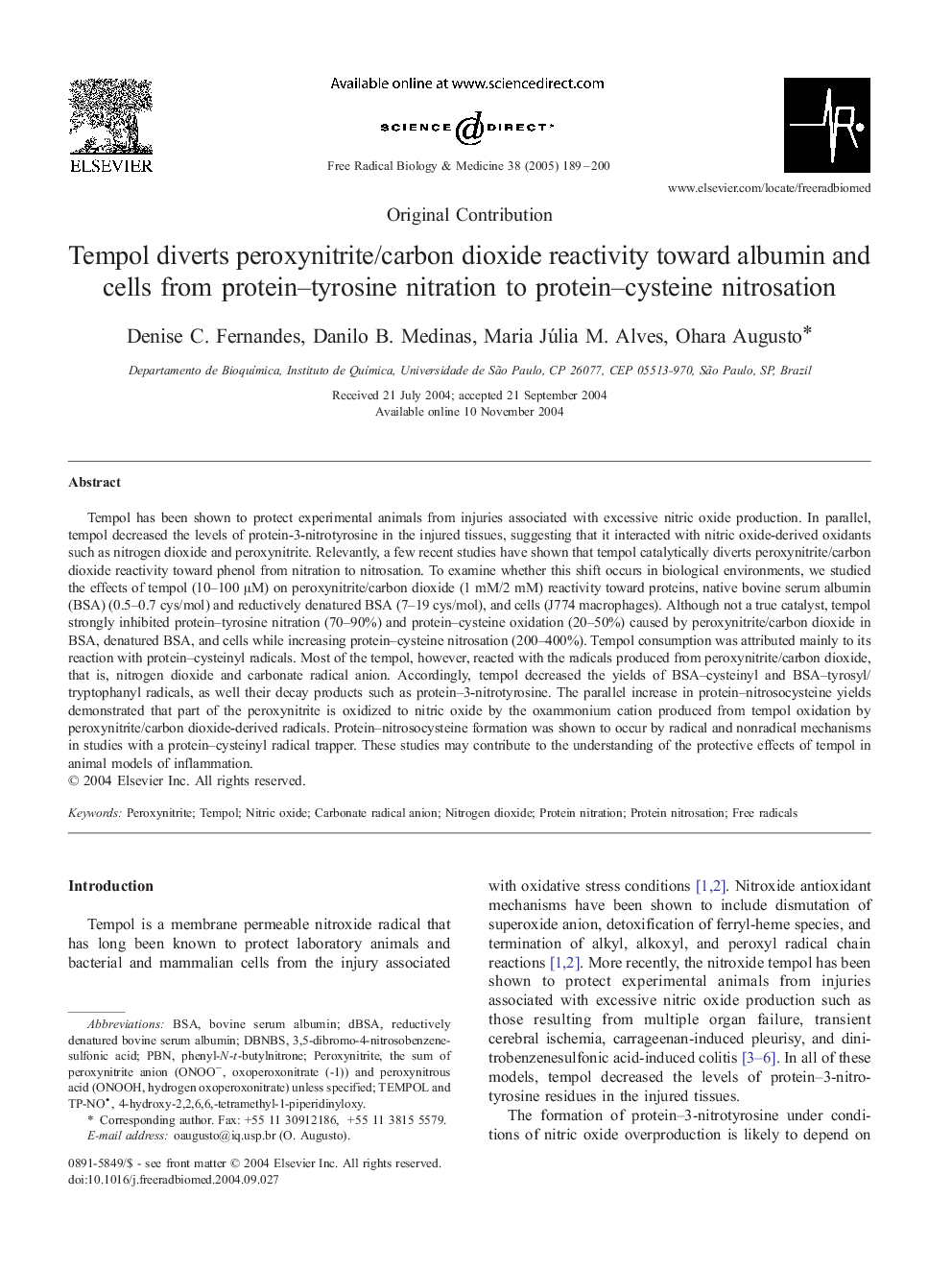| Article ID | Journal | Published Year | Pages | File Type |
|---|---|---|---|---|
| 10739538 | Free Radical Biology and Medicine | 2005 | 12 Pages |
Abstract
Tempol has been shown to protect experimental animals from injuries associated with excessive nitric oxide production. In parallel, tempol decreased the levels of protein-3-nitrotyrosine in the injured tissues, suggesting that it interacted with nitric oxide-derived oxidants such as nitrogen dioxide and peroxynitrite. Relevantly, a few recent studies have shown that tempol catalytically diverts peroxynitrite/carbon dioxide reactivity toward phenol from nitration to nitrosation. To examine whether this shift occurs in biological environments, we studied the effects of tempol (10-100 μM) on peroxynitrite/carbon dioxide (1 mM/2 mM) reactivity toward proteins, native bovine serum albumin (BSA) (0.5-0.7 cys/mol) and reductively denatured BSA (7-19 cys/mol), and cells (J774 macrophages). Although not a true catalyst, tempol strongly inhibited protein-tyrosine nitration (70-90%) and protein-cysteine oxidation (20-50%) caused by peroxynitrite/carbon dioxide in BSA, denatured BSA, and cells while increasing protein-cysteine nitrosation (200-400%). Tempol consumption was attributed mainly to its reaction with protein-cysteinyl radicals. Most of the tempol, however, reacted with the radicals produced from peroxynitrite/carbon dioxide, that is, nitrogen dioxide and carbonate radical anion. Accordingly, tempol decreased the yields of BSA-cysteinyl and BSA-tyrosyl/tryptophanyl radicals, as well their decay products such as protein-3-nitrotyrosine. The parallel increase in protein-nitrosocysteine yields demonstrated that part of the peroxynitrite is oxidized to nitric oxide by the oxammonium cation produced from tempol oxidation by peroxynitrite/carbon dioxide-derived radicals. Protein-nitrosocysteine formation was shown to occur by radical and nonradical mechanisms in studies with a protein-cysteinyl radical trapper. These studies may contribute to the understanding of the protective effects of tempol in animal models of inflammation.
Keywords
Related Topics
Life Sciences
Biochemistry, Genetics and Molecular Biology
Ageing
Authors
Denise C. Fernandes, Danilo B. Medinas, Maria Júlia M. Alves, Ohara Augusto,
